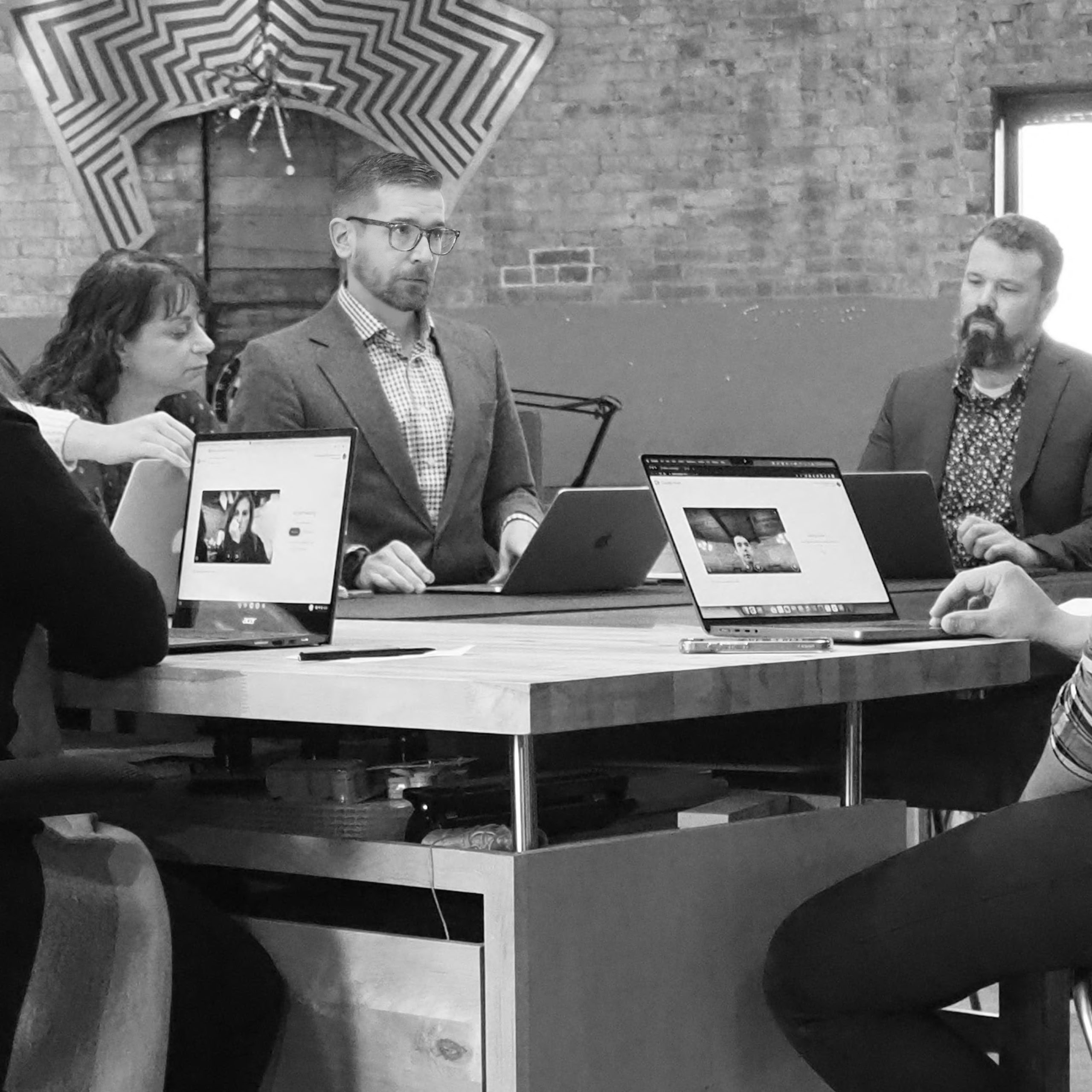The Hybrid Office Solution: Bringing flexibility to the workplace.

Post-lockdown, when people could safely return to the office, Signal Works chose not to return to business as usual. Instead, it made a deliberate shift into an environment with a hybrid, flexible schedule. Eric Army, Signal Works founder says, “We decided that this would allow us to better support our people while remaining mission-aligned.” This shift, however, was no simple task. It required great planning and dedication to an evolution.
Treating employees like individuals with individual needs is an important part of the culture at Signal Works, and the hybrid schedule with flexible hours allows employees to not only maintain a healthy work/life balance, but to have the freedom to work during the hours they’re most effective.

A Hybrid, Flexible Schedule
Although Signal Works employees always have access to the office, generally they work from home Monday, Wednesday and Friday, dedicating their time to deep, individual work during hours that work best for them, and gather at the office on Tuesdays and Thursdays. The in-office days are typically reserved for department meetings, training, structured and informal collaboration, and working toward shared goals that move the company forward.
Built into the hybrid model, however, is the capacity to accommodate the unexpected. If an unplanned childcare need arises or a team member is dealing with a car mishap on a planned in-office day, team members can participate in department meetings remotely. The company’s momentum is not lost just because life happened.
With this change, Signal Works had to adjust how it viewed a successful day, week, month and quarter. Army says, “We had to intentionally move from being an input-focused organization to one that is outcome focused.”
As company leaders and staff began to embrace that mind shift, Dan Niederman, Signal Works’ Business Director, worked behind the scenes to put technology in place that allowed for a seamless daily transition from home to office.

Making Technology Work
Communication — or overcommunication as Niderman says — and transparency are key to making a hybrid environment work. Signal Works employees communicate through Slack, with clear escalation policies in place for emergencies, and reserve email for client communication. This policy streamlines employee correspondence. Policies surrounding file sharing also are important, and Signal Works operates in the cloud so that teams can share information no matter where they are.
Proper hardware also helps to ensure a hybrid staff can function effectively. The organization purchased a powerful Mac Mini for each employee along with two sets of power cords, mice and keyboards — one for the office and one for home — to make their commute less cumbersome. Each employee also was given two monitors so they could set up their workspaces in a way that’s most convenient for them.
But the success of this hybrid, flexible environment relies on more than proper goal setting, software and equipment. It relies on trust — trust from leadership that employees will do their best work if given the proper support to do so and trust from employees that they’ll be given the support they need.
What of the standard 9 to 5 that requires employees to sit at a desk, no matter what is happening in their life outside of work? “We flatly reject that kind of thinking,” Niederman says. “Companies that refuse to be flexible are going to miss out on talented individuals who have a lot to contribute.”
We want to hear from you! What’s your best tip for maintaining work/life balance and how does your employer support you? Tell us by sending an email to hello@signalworksarchitecture.com.
- Meet Dan: A catalyst for results and a lover of metrics.
- The Outdoor Challenge: creating outdoor spaces people love and use.
- How your building project can help your people thrive.
- Meet Bryan: An efficient project manager and architect focused on legacy.
- Meet Joanna: A passionate renovations whiz and design strategist.